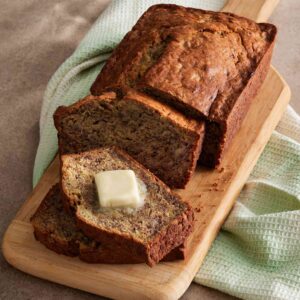Table of Contents
Eating healthy foods is one of the best ways to improve your health and well-being. But what are healthy foods to eat? How can you choose and prepare them? How can you incorporate them into your daily diet? In this article, I will answer these questions and provide you with some tips and examples of healthy foods to eat. By the end of this article, you will have a better understanding of how to eat healthy foods without sacrificing taste or variety.
What are Healthy Foods to Eat?
Healthy foods to eat are foods that are minimally processed, natural, and wholesome. They are foods that come from plants or animals and have not been altered or added with artificial ingredients, preservatives, or chemicals. They are foods that are rich in nutrients, such as vitamins, minerals, fiber, protein, healthy fats, and phytochemicals. They are foods that are low in calories, saturated fat, trans fat, sugar, and salt.
How to Incorporate Healthy Foods to eat into Your Daily Diet?
Incorporating healthy foods into your daily diet is not hard or boring. You just need to follow these simple tips:
- Plan your meals and snacks ahead of time: This will help you avoid impulse buying and eating unhealthy foods. You can use a meal planner app or a notebook to write down your menu for the week. You can also prepare some healthy foods in advance and store them in the refrigerator or freezer for later use.
- Eat a variety of healthy foods from different food groups: This will help you get all the nutrients you need and prevent boredom and cravings. You can use the [MyPlate] guide to create balanced and colorful plates for each meal. You can also try new recipes and cuisines that use healthy foods in different ways.
- Eat mindfully and moderately: This will help you enjoy your food more and avoid overeating or undereating. You can practice mindful eating by paying attention to your hunger and fullness cues, chewing your food slowly and thoroughly, savoring the flavors and textures of your food, and avoiding distractions while eating. You can also practice moderate eating by using smaller plates and utensils, serving yourself reasonable portions, and stopping when you are satisfied but not stuffed.
20+ examples of healthy foods to eat
Here’s a list of more than 20 healthy foods that you can include in your diet:
- Leafy Greens: Spinach, kale, Swiss chard, and collard greens are packed with vitamins and minerals.
- Berries: Blueberries, strawberries, raspberries, and blackberries are rich in antioxidants and fiber.
- Broccoli: A cruciferous vegetable that’s high in vitamins C and K, as well as fiber.
- Salmon: A fatty fish rich in omega-3 fatty acids, which are beneficial for heart health.
- Sweet Potatoes: A great source of vitamins A and C, fiber, and complex carbohydrates.
- Quinoa: A high-protein whole grain that’s gluten-free and rich in fiber.
- Nuts: Almonds, walnuts, and pistachios provide healthy fats and protein.
- Oats: High in fiber and antioxidants, oats can help lower cholesterol.
- Greek Yogurt: A protein-rich dairy option with probiotics for gut health.
- Avocado: Packed with healthy fats and fiber, avocados are great for heart health.
- Legumes: Beans, lentils, and chickpeas are excellent sources of protein and fiber.
- Tomatoes: Rich in vitamins C and K, as well as lycopene, which may reduce the risk of certain cancers.
- Eggs: A good source of high-quality protein and essential nutrients.
- Lean Protein: Chicken breast, turkey, lean beef, and tofu are all protein-rich options.
- Whole Grains: Brown rice, whole wheat pasta, and barley are nutritious choices.
- Cucumbers: Low in calories and a great source of hydration due to their high water content.
- Carrots: Rich in beta-carotene, which is converted to vitamin A in the body.
- Bell Peppers: High in vitamin C and a variety of vibrant colors to choose from.
- Cauliflower: A versatile vegetable that can be used in place of grains in some recipes.
- Mushrooms: Low in calories and a source of B vitamins and minerals.
- Onions: Add flavor to dishes and contain antioxidants.
- Garlic: Known for its potential health benefits, including boosting the immune system.
- Chia Seeds: High in fiber, omega-3 fatty acids, and protein.
- Flaxseeds: Rich in fiber and healthy fats, flaxseeds are also a good source of plant-based omega-3s.
- Cottage Cheese: A high-protein dairy option that can be used in both sweet and savory dishes.
- Green Tea: Contains antioxidants and may have various health benefits.
- Dark Chocolate: In moderation, dark chocolate with a high cocoa content can provide antioxidants and be a healthier dessert option.
- Oranges: High in vitamin C and fiber.
- Pomegranates: Loaded with antioxidants and vitamin C.
- Kiwi: A small fruit packed with vitamins C and K, as well as fiber.
Including a variety of these healthy foods in your diet can help you get a wide range of essential nutrients and support overall health.
Conclusion
Incorporating healthy foods to eat into our diets is essential for maintaining a balanced and nutritious lifestyle. By making conscious choices about what we eat, we can fuel our bodies with the nutrients they need to thrive. In this article, we have provided a guide to help you navigate the world of healthy foods, from nutrient-dense fruits and vegetables to lean proteins and whole grains. By incorporating these foods into your daily diet, you can improve your overall health and well-being.
Call to Action
Ready to embrace a balanced and nutritious diet? Start by incorporating the healthy foods mentioned in this guide into your meals. Experiment with new recipes, explore local farmers’ markets for fresh produce and make mindful choices when grocery shopping. Remember, small changes can make a big difference in your health. So, commit to nourishing your body with wholesome foods and watch as your energy levels increase and your overall well-being improves.
Follow us to see more useful information, as well as to give us more motivation to update more useful information for you.





